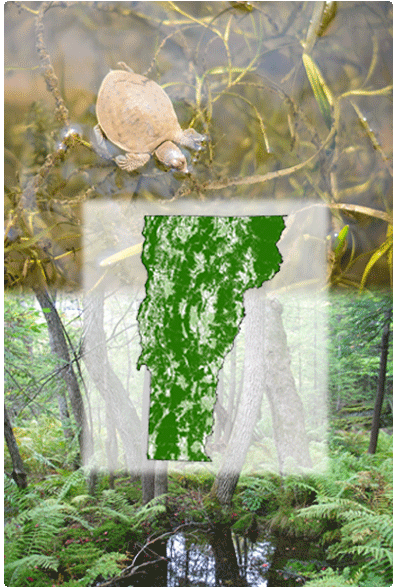Plant Inventory

Vermont is home to over 2,800 plant species. Most of these are flowering plants, but this also includes conifers, ferns, grapeferns, clubmosses, horsetails, quillworts, spikemosses, and bryophytes—mosses, liverworts, and hornworts.

Vermont is home to over 2,800 plant species. Most of these are flowering plants, but this also includes conifers, ferns, grapeferns, clubmosses, horsetails, quillworts, spikemosses, and bryophytes—mosses, liverworts, and hornworts.
Monitoring turtle distribution and nesting success helps determine trends and improves management and conservation efforts. Below are summaries for two turtle species the department is currently monitoring.
Ongoing monitoring of nesting success helps determine trends or fluctuations in numbers and offers a better understanding of what management and conservation efforts are needed. Below are the survey results of several bird species the department is currently monitoring to ensure these species are here for all Vermonters to enjoy now and into the future.
Follow these steps to access information about Vermont’s Natural Heritage using Vermont Agency of Natural Resources Atlas.

1. Open the ANR Atlas: http://anrmaps.vermont.gov/websites/anra5/
2. Click on the blue Quick Tools button
Natural Heritage information is objective scientific information, or data, about species and natural communities. It is used for local, state-wide, and regional conservation planning and management, and to monitor and conserve rare, threatened, and endangered species.


The following rules allows the department to better protect the public's use of and interests in the more than 130,000 acres the department manages throughout Vermont.

Select the WMA to view a map and description of the WMA

Select the WMA to view a map and description of the WMA

Select the WMA to view a map and description of the WMA

Select the WMA to view a map and description of the WMA